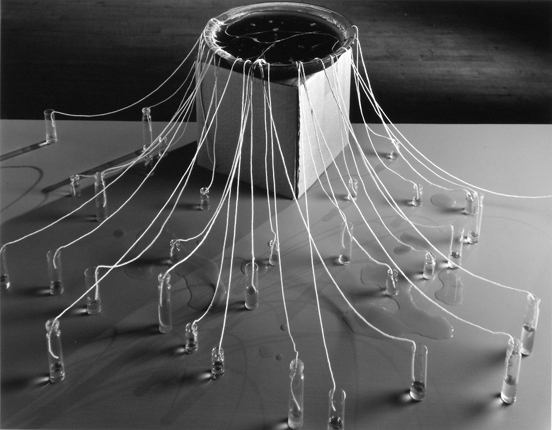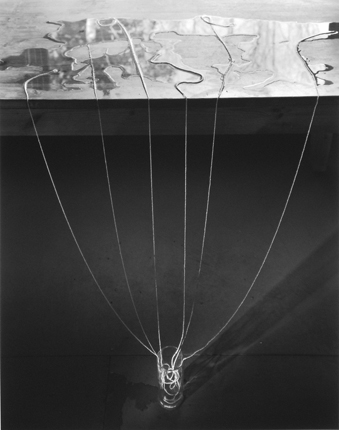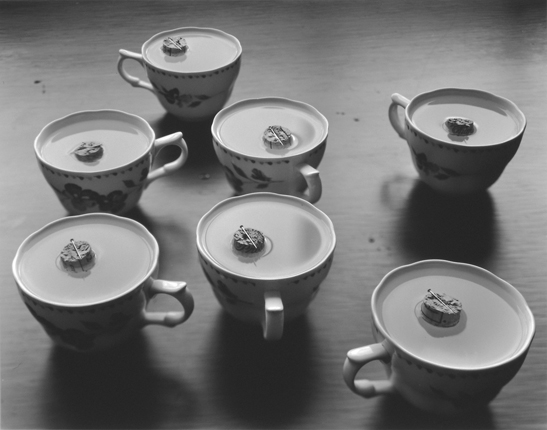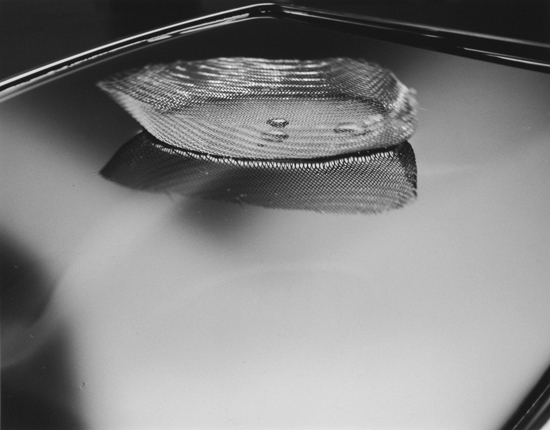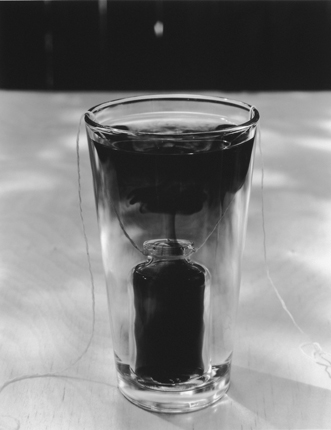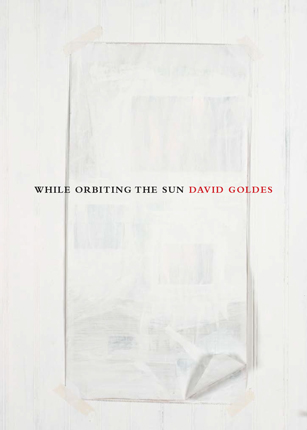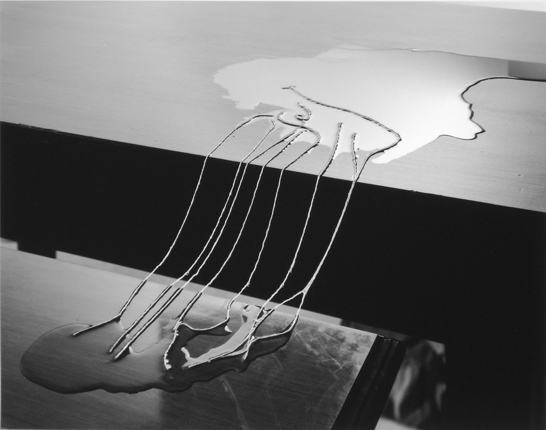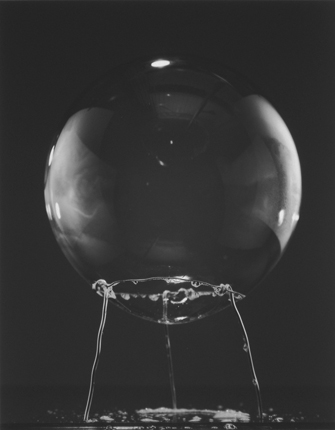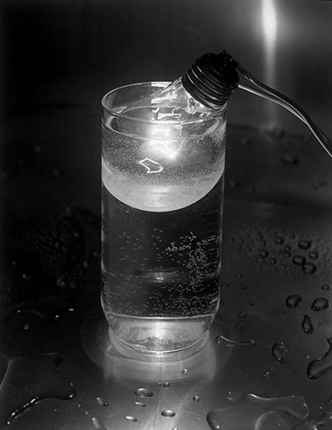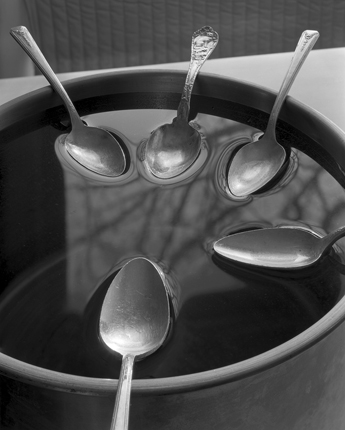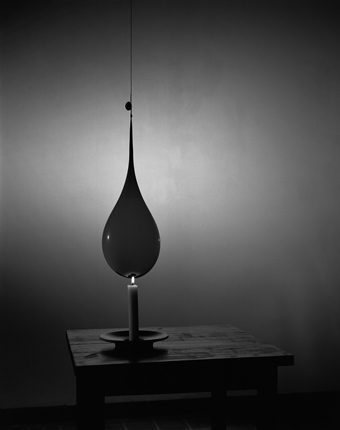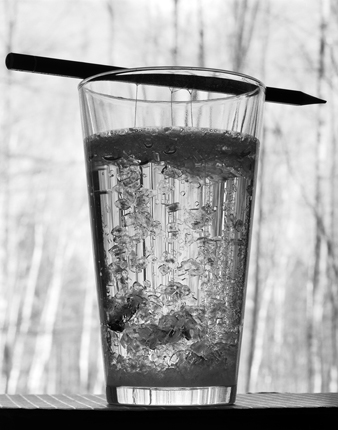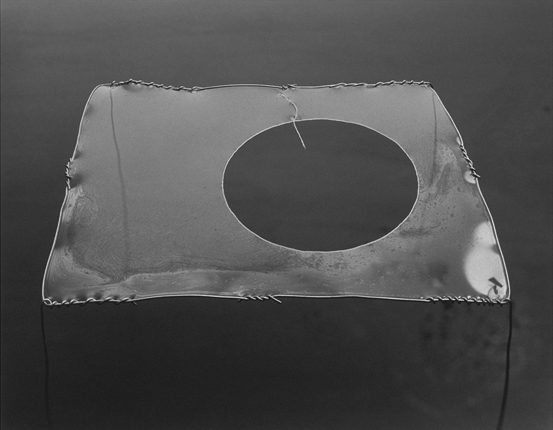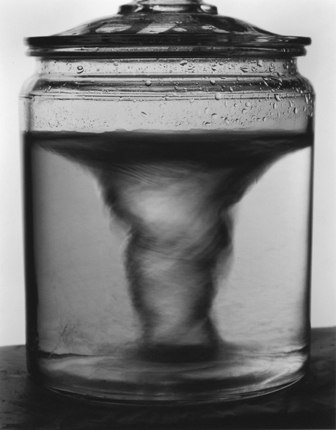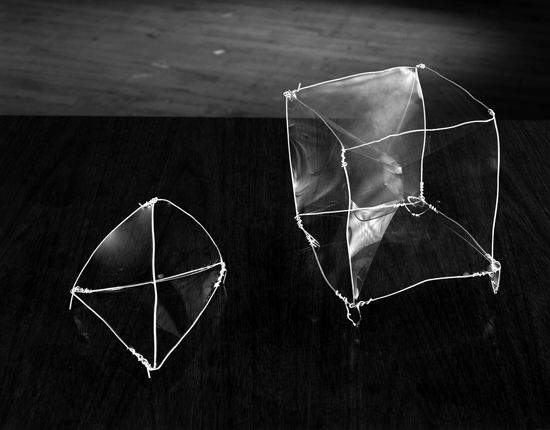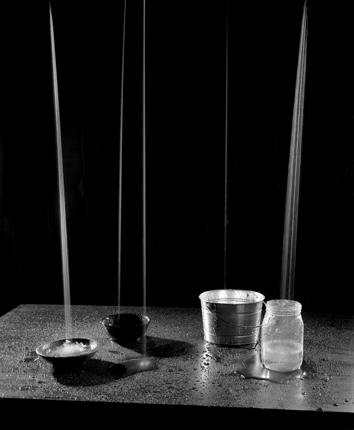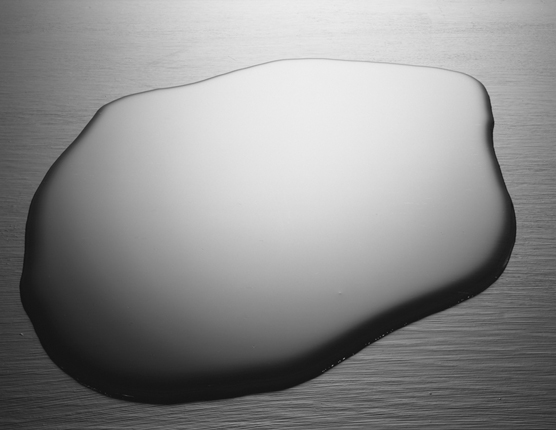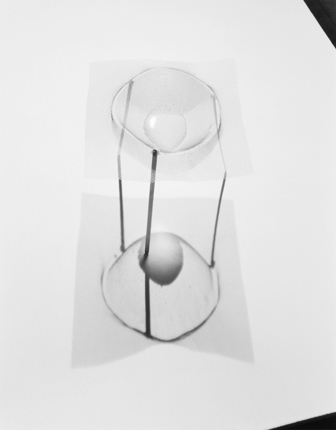This is a selection of pictures from the project “Water Being Water” selected by David Goldes for Landscape Stories.
W.a.t.e.r.
Hydrogen, born of the big bang, is as elementary as the universe can create. Oxygen is sixteen times heavier and slightly younger. When the universe cooled sufficiently the bumping and colliding of these elements could form water. The molecule it made resembles Mickey Mouse’s head. Oxygen’s (the head) love for electrons gives it a negative charge, while the hydrogen atoms (the ears) are left with a positive one. Because of these charge differences, the hydrogen atom of one water molecule is attracted to the oxygen of another.
It’s a liquid at room temperature. If there were no hydrogen bonding, it would be a gas. But it is a liquid. Make it cold. Slow down the Mickey heads so that they can bond with as many of themselves as possible. Make it colder yet and you have ice. And when you do, the Mickeys have packed themselves in such a way so that there is more room around them than when they are a liquid. Because of this, ice floats in your drink or on the lake. And because of it, when you press on ice and force the molecules closer together you are forcing it to become a liquid. I tell that to my son as he races off across the frozen lake. It’s what lets him skate. There’s a thin layer underneath his blade, which lubricates his ride. Once he’s gone and the pressure is off, the water freezes back up.
Pour water in a bowl, fill it to the brim. and slowly pour in a little more and watch the water go higher than the lip. The water molecules cohere to each other and form a net holding the water in. Gently put a pin on the water and it floats. But put a drop of soap onto the surface and the net is ruptured; the water overflows.
When water pours out of holes made in a can it sprays out in individual streams. If they are close to one another, you can pinch the streams together to form one big stream. The water sticks to itself; perhaps you can even say it loves itself. You can say that hydrogen bonding is doing this. You can say that if you never pinched the streams together they would simply pour out separately. The energy of the pinch brings the streams close enough so that hydrogen bonding can take hold.
When plants take in carbon dioxide and water for photosynthesis, they strip the hydrogen off the water molecule and release oxygen. All the oxygen that we breathe and which fire needs to burn was once part of water.
But pour water on a fire and it puts it out. The evaporation of water takes heat from what is burning and cools it. Cool it enough and the burning building or log stops burning.
You can put water into your body and your body into water. My sister drinks eight glasses of water a day with hopes of living longer. Put my body into the lake and I fear it will sink; I hardly swim. Put my hand into a warm stream and one will come out of me. And with any luck, it will fall gracefully into, yet another, bowl of water.

